CSAE 2019 The 3rd International Conference on Computer Science and Application Engineering
Keynote Speakers
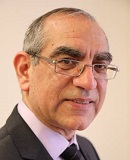
Ali Emrouznejad
Professor
Aston Business School, Aston University, UK
Title: Analytical Models for Evaluation of Big Data Entities
Abstract: Organizations are constantly collecting a variety of data, such as standard tables, text, pictures, and videos, of unprecedented sizes (millions or billions of records / variables) and from various sources, with the aim to use such data to improve their operations / services and create competitive advantage. There is a collective assumption that if organizations can learn to harness Big Data, then their operational capabilities would be transformed.
In this talk we give examples of big data cases and explain how big data analytics could benefit of mathematical modelling to improve the performance of each entity.
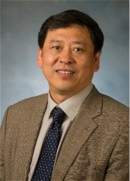
Xudong Jia
Professor
California State Polytechnic University, Pomona (Cal Poly Pomona)
Title: Use of Big Data for Intelligent Transportation Systems and Earthquake Early Warning Systems in Southern California
Abstract: The purpose of this presentation is to demonstrate the use of big data for intelligent transportation systems and earthquake early warning systems in Southern California
Using the big data environment, the Los Angeles Metropolitan Transportation Authority has collected, stored, and developed data analytics from real-time traffic data including volumes, speeds, and densities of freeway flows, bus information, signal timing information, status of light rails, and incident information within Southern California. This environment has been used since 2008 to provide strategies and solutions to traffic congestion in Southern California. This environment is planned to integrate with real-time seismic sensing data to provide a real-time earthquake early warning system with a goal of 20 seconds early warning service. Earthquake early warning messages can be announced to drivers using connected vehicle technologies.

Anna Ursyn
Professor
Computer Graphics/Digital Media Area Head, School of Art & Design, University of Northern Colorado, US
Title: Graphical Thinking in Math, Programming and Sciences
Abstract: Visual ways of thinking that involves aesthetics support abstract thinking abilities has the power to affect knowledge comprehension and retention. Knowledge can be presented in a visual way by allowing the learner and the researcher to compare and contrast data beyond abstract concepts beyond processes and products. Whatever we do, we tell the story, we record it through the use of visual means of storyboards, web trees, and sketches combining visual and verbal information. We use visual ways going beyond graphs and bars, by using metaphors, analogies, signs, symbols, and other means of visual shortcuts to communicate faster and more effectively, so we can talk about beautiful information. Apps allow us to do that on the go. We can even create Fractal art. Coding can be learned in a visual way. NASA follows George Lucas’ design for their Mars based efforts. Large set of data can be presented in an interactive way, and is often set on more than three axes, thus allows the user to examine dynamic factor of co-related changes and resulting effects in real time. New tools and materials allow for new solution and abilities of the eye and go along with programming and sustainability. STEM to STEAM movement (+Art) becomes present and acknowledged globally. Various examples will be shown. Collaborative efforts bridge a gap between the ways we draw from, describe, and explore Nature. Examples of solutions to visual coding, real time, interactive data presentation, sustainable solutions for architecture three ways to mimic Nature, and generative art and architecture will be discussed. Examples of visual solutions will illustrate this talk. We are finishing working on our book for coding for the artists: Majid Al-Rifaie, University of Greenwich, London, Anna Ursyn, UNC, Theodor Wyeld, Flinders University, Australia: The Art of Coding: The Language of Drawing, Graphics, and Animation. The CRC Press Taylor & Francis Group LLC Publishing Company, under contract.
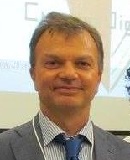
Filippo Lanubile
Full Professor
University of Bari, Italy
Title: Data science and Software Engineering: a two-way path?
Abstract: Data science is widespread in software engineering to extract knowledge and insights from the rich data, both structured and unstructured, available in software project repositories. The first part of the talk will present where raw data come from and some questions that can be answered when data science is applied to help software engineers. But what about the opposite? Can processes and tools from software engineering be applied to help data scientists? The answer is not obvious. The second part of the talk will present some research initiatives and best software engineering practices that can be considered to address the challenge of a data-driven economy.
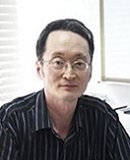
Steven Guan
Professor
Director, Research Institute of Big Data Analytics (RIBDA), Xi’an Jiaotong-Liverpool University
Title: Opportunities and Challenges in Information Communications Technology
Abstract: This talk introduces the overall trends of Information Communications Technology (ICT) and presents an overview for opportunities and challenges in ICT. Critical issues, research problems and developments of ICT in various areas are addressed, such as green computing, Internet computing, mobile computing, and intelligent computing. Opportunities and challenges in relevant areas are also covered, for example, Internet of Things, cloud computing, big data analytics. Critical development of ICT in various aspects are proposed thereafter. Finally, the challenges faced by the higher education sector are also discussed.
Keywords: Green computing, Internet computing, mobile computing, intelligent computing, Internet of Things, cloud computing
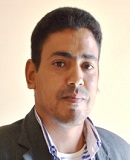
Yousef FARHAOUI
Professor
Moulay Ismail University, Faculty of sciences and Techniques, Morocco
Title: Big Data and Internet of Things for Air quality prediction
Abstract: The amount of data being generated by connected devices of Internet of Things (IoT) keeps increasing rapidly which brings about an evolving term that can change the world; it’s about Big Data and its serious challenges to deal with highly complex data. we examine the possibility to make a fusion between the two new concepts Big Data and Internet of Things; in the context of predicting environmental issues that face our planet nowadays. Indeed, one of these environmental problems is Air pollution that occurs when harmful substances are introduced into Earth's atmosphere.
In this context, that our project integrates and whose mission is to use the new technologies namely the Internet of objects; Which represents the exchange of information and data from devices present in the real world to the Internet, and the Big data, which means datasets that have become so large and so difficult that they go beyond intuition and Human analytical capabilities and even those of traditional computer-based database or information management tools. This fusion of the two concepts will be carried out in the context of predicting environmental problems such as air pollution in which the concentrations of certain pollutants exceed the levels prescribed by law and affect the health of the population. The collection of data will be carried out by the use of the wireless sensors network (WSN) which will be dispersed within our country in a geographical area that corresponds to the area of interest for the phenomenon captured. These sensors will be able to collect and transmit environmental data in an autonomous way.
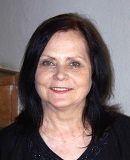
Veronika Stoffová
Professor
Trnava University in Trnava, Slovakia
Title: Modelling and Simulation in Research and Education
Abstract: The lecture presents more than 40 years of author's experience of using computer modelling and simulation of systems methods in various fields of science and research. Modelling and simulation of systems is shown as a research method for acquiring new knowledge about the modelled object based on the results of simulation experiments. The relevance of acquired knowledge is ensured by an exact mathematical model of the system defined on the subject of the study. She presents unlimited possibilities of this research method on the example of modelling the dynamics of man's brain-system (cerebral-spinal system). A well-implemented mathematical model can be used as a substitute for a real object and allow to study its properties on a simulation to gain new information about the object modelled.
Based on relatively simple mathematical models, many dynamic phenomena and processes can also be presented for didactic purposes. We are talking about phenomena and processes that are already well known, are precisely mathematically described and are the subject of education. Using animations controlled by parameters, it is possible to visually present the results of simulation experiments. Well-planned and accurately implemented simulation experiments allow study the effect of model parameter values changes on the behaviour of the modelled object. Alternatively, they can be used to discover and test the properties of the modelling processes based on user/experimenter/ researcher's own observations. Visualization also helps to correctly understand and interpret results obtained by the experiment.
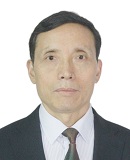
Nai-qin Feng
Professor
He'nan Normal University & Zhengzhou University of Industrial Technology, China
Title: A New Method of Neural Network Integration
Abstract: Neural network integration can effectively improve the generalization ability of neural networks. However, at present, neural network integration is mainly aimed at traditional neural network, which has many disadvantages, such as high complexity, strong experience dependence and long training time, and thus hindering the development and application of neural network integration. Morphological neural network is very different from traditional neural network, it has no long training process, no convergence problem, but also has unlimited storage capacity, one-step recall memory, better anti-noise performance and computational intelligence characteristics, so for the neural network integration and application has brought new light. In this paper, the concept, method and theory of morphological neural network integration are proposed, and MAM, FMAM, LEMAM and other morphological neural networks are integrated within the framework of morphological associative memory, and the classification and prediction tasks are tested on several commonly used UCI machine learning data sets.
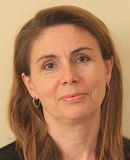
Strozzi Fernanda
Associate Professor
Cattaneo University, Castellanza (VA), Italy
Title: From Smart Factories to Smart Supply Chains: the risks and opportunities of Information Sharing
Abstract: In Strozzi et al. 2017 the concept of the ‘Smart Factory’ was studied. A Smart Factory is a production plant where the pillars of Industry 4.0 are implemented. In 2016 the Boston Consulting group published an interesting report identifying nine pillars of the Smart Factory concept i.e. vertical and horizontal integration, cloud, cybersecurity, augmented reality, Big data analytics, Internet of Things, autonomous robot, simulation and additive manufacturing (The Boston Consulting Group, 2016). The Smart Factory operates in a network in which companies, suppliers and customers are closely linked. The importance of the well-functioning of the supply chain for the factories is huge. Jabeene et al., (2017) stated that the manufacturers lose 9% to 20% of profits in a time span of six months due to supply chain problems. The main causes of these losses lie in the high inventory of goods, deficit of spare parts, unnecessary damage charge, underutilized plant capacity, and the excess cost of the warehouse. All these losses may be eliminated, or at least reduced, with better integration of the activities of the supply chain levels i.e. between supplier, manufacture and distributors. Supply chain management deals with “having the right item in the right quantity at the right time at the right place for the right price in the right condition to the right customer” (Mallik, 2010). To better deal with the increasing challenges to be faster and cheaper and, at the same time, to manage the increase of complexity, the uncertainty and the vulnerability, supply chains must become much smarter (Butner, 2010). This is possible thanks to the improvements in information technologies and in other engineering technologies. The new version of the supply chain tries to combine information, data, products, physical objects and business processes establishing a large-scale intelligent infrastructure to (Schuster et al., 2007). Wu et al (2016) defined a smart supply chain as “the new interconnected business system which extends from isolated, local, and single-company applications to supply chain wide systematic smart implementations”. They performed a literature review on the Smart Supply Chain Management and they observed that “the Information in the supply chains really refers to what smart is all about”. Colicchia et al. (2018) performed a recent literature review on the information sharing in the supply chains and related risks and opportunities, taking into account the evolution over time. The topics studied range from the impact of information sharing on supply chain performances and the problem security problem to the main the enabling factors, such as institutional forces, interpersonal relationship and trust. Their paper sheds light on what is happening today and what the trajectory for the future are. In this presentation the different views of Smart factory concept in Europe, US and China will be presented and the main characteristics that the Smart factories need to have to be part of a Smart Supply Chain will be analyzed. The risks, opportunities and the future development of the Smart Supply Chains will be discussed.
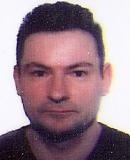
Philippe Durand
Assistant Professor
Conservatoire National des arts et métiers, Paris, France
Title: Topological tools applied for pattern recognition, engineering science and mathematical physics
Abstract: The applications of the topology in image processing leads to decisive results concerning the classification of the data, it allows an adaptation to different problems: It adapts to different kinds of data coming from the remote-sensing like the radar
images or those from other sensors. In engineering science, it reinforces the tools derived from graph theory for tensor analysis of electromagnetic networks the homotopy theory coming from algebraic topology generalizes the notion of discrete connectivity in graph theory. homological theoy allows to find laws well known in electricity. Finally, in mathematical physics topology is a help for a better understanding of the quantum world.